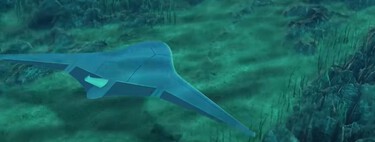A remote-controlled and self-propelled lifesaver capable of moving at 15 km/h: this is U-Safe, the drone for relief operations on the high seas

In the middle of the Atlantic, at night and with a rough sea, a misstep that ends with a sailor falling overboard can end in the worst possible way. With the water at three or four degrees, hypothermia is often a fatal sentence. If the crew becomes aware of the accident, they can launch a life preserver, but it will most likely take several minutes to deploy. It’s not much on deck, true; but yes when they spend fighting with the waves of a frigid and choppy ocean. Once in the water, the float also has its drawbacks. It must fall near the castaway or, if not, it will be he himself who stands up to the tide.
half kilometer range
To avoid dramas of this type —or alleviate them, as far as possible— the Portuguese company Noras Performance has developed a remote-controlled and self-propelled lifesaver able to address the sailor and bring him back to the ship. The device, U-Safe, which has just started to be marketed in Spain by Gaexcon, aims to complete rescue missions in just a few minutes. For now, it has already been successfully tested on the coasts of the Rías Baixas, in Galicia, and on deep-sea ships. It also has the experience accumulated in other countries. One of the shipowners installed in the port of Vigo, Rampesca, owner of several freezer vessels —needs the diary The voice of Galicia—, has already acquired units as well.

U-Safe weighs 14 kilos and is capable of riding the waves at a speed of 15 kilometers per hour. Its radius of action is 500 meters when driven at a height of 10 m. At sea level the range is somewhat lower, 300 m. Noras has designed it so that it can be maneuvered remotely, via remote control, from the ship’s bridge or even by a sailor who comes to the rescue of his partner, something crucial if the fallen crew member has lost consciousness. For its use, the operator has a remote control equipped with a joystick that works with radio frequency.
“A device like this was badly needed on vessels that fish in cold areas. Whoever handles it throws it into the water and can quickly reach the person in the water”, comments Domingo Fernández, head of Gaexcon, who specifies that the device can drag approximately 240 kilos, which allows you to serve two people at the same time.

the drone measures 80 centimeters wide and one meter high and is made of polyurethane, in one piece, to prevent water from seeping through the joints. It incorporates lights and the prototype is also equipped with a lithium battery with a range of 35 minutes. Before using it, the crew does not need to activate it. U-Safe remains in standby, so it arrives with throwing it into the water. joystick, 231.5 grams and a range of five hours, can also be handled in the water.
U-Safe is not the first remote control device designed for emergency operations at sea. Last summer the Valencia City Council, in collaboration with the Red Cross, carried out a rescue drill on Cabanyal beach to present TOMORROW —rescue aquatic remote control—, a remote-controlled lifesaver designed to support lifeguards during rescues.
Like the Gaexcon drone, CRAS has an effective range of half a kilometer. Its autonomy is 30 minutes and reaches a load capacity of 250 kilos and a speed of 10 kilometers per hour. Its philosophy is also similar to the Galician development: the rescue board can be operated remotely, remotely, or by transporting the rescuer to the danger zone.
Cover Image | Gaexcon
Reference-www.xataka.com